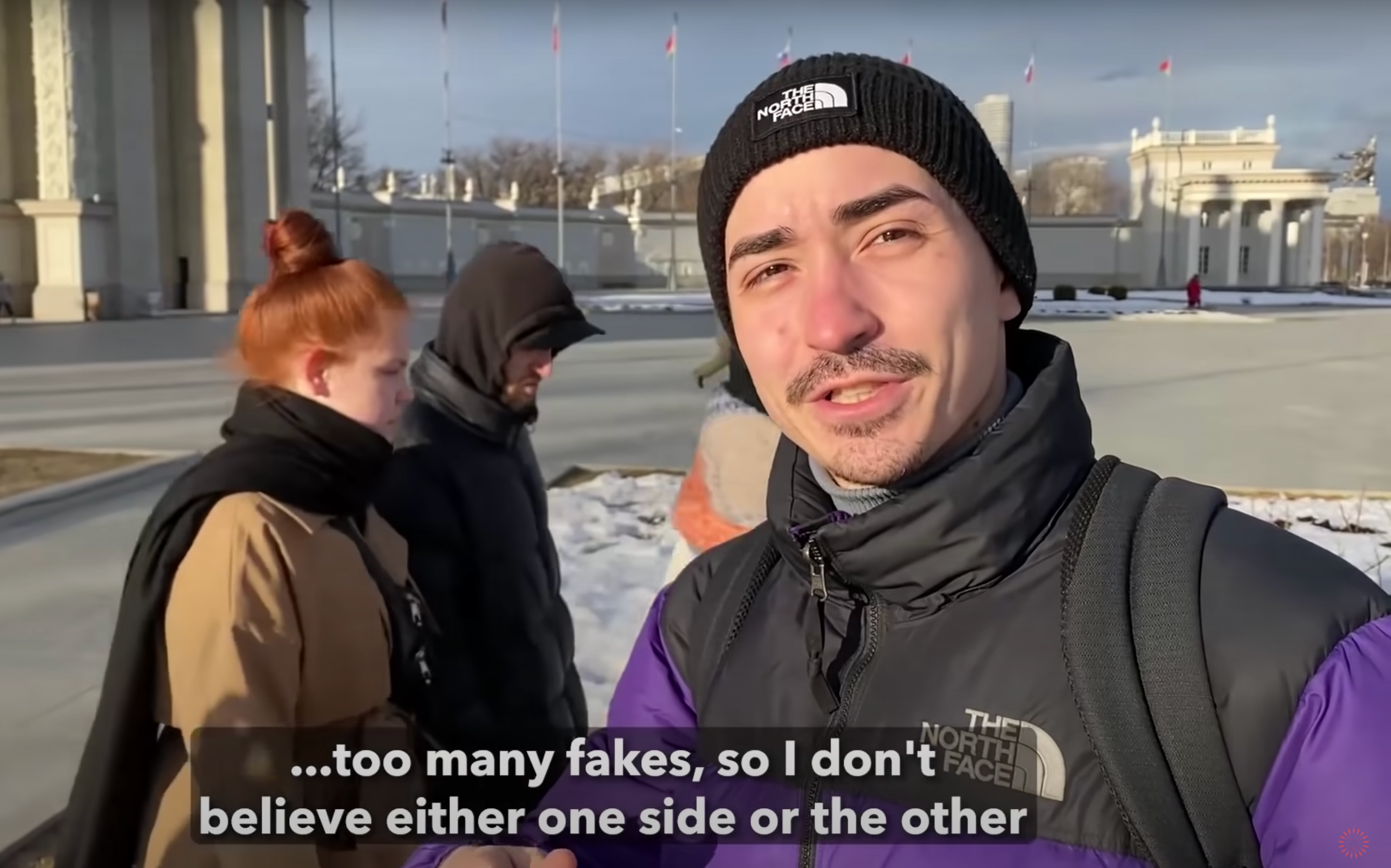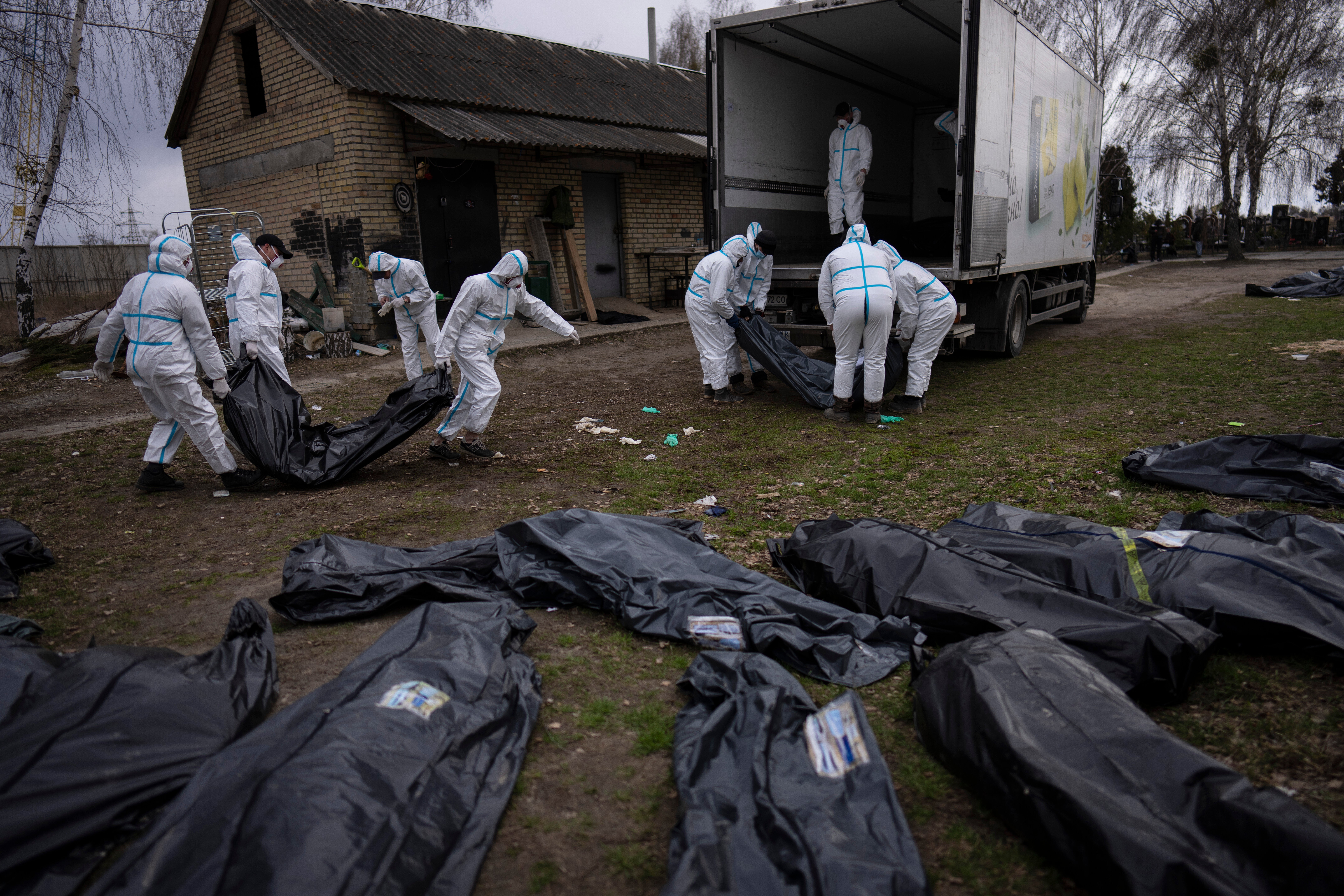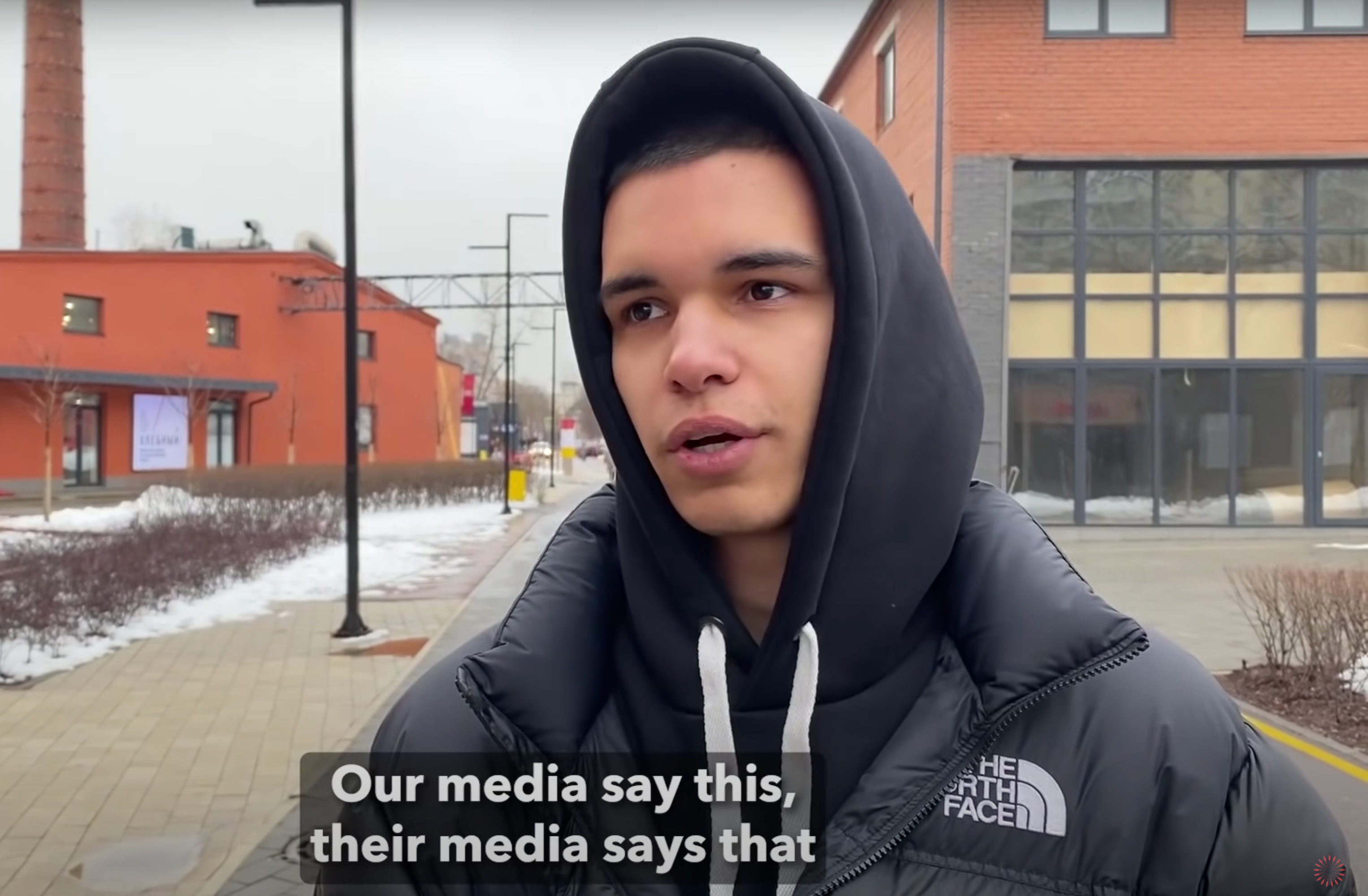YouTuber shows Russians’ chilling reactions to Bucha atrocities: ‘It’s all fake’
Seeing footage of Ukrainian corpses, pedestrians in Moscow were less outraged than confused and dubious – which suggests a successful disinformation campaign, writes Nathan Place

Your support helps us to tell the story
From reproductive rights to climate change to Big Tech, The Independent is on the ground when the story is developing. Whether it's investigating the financials of Elon Musk's pro-Trump PAC or producing our latest documentary, 'The A Word', which shines a light on the American women fighting for reproductive rights, we know how important it is to parse out the facts from the messaging.
At such a critical moment in US history, we need reporters on the ground. Your donation allows us to keep sending journalists to speak to both sides of the story.
The Independent is trusted by Americans across the entire political spectrum. And unlike many other quality news outlets, we choose not to lock Americans out of our reporting and analysis with paywalls. We believe quality journalism should be available to everyone, paid for by those who can afford it.
Your support makes all the difference.As disturbing reports have emerged of Ukrainians being tortured and executed, one YouTuber has taken the video evidence to the streets of Moscow, showing average Russians the atrocities apparently being committed in their name.
Daniil Orain, 21, filmed pedestrians’ reactions and posted them on his popular YouTube channel, 1420. But if you watch his video expecting cries of shock and horror, you’ll be disappointed. More than anything, the Russians who agreed to speak to him are just confused.
“They say that it’s fake, it’s propaganda,” Mr Orain told The Independent. “Mostly, people say that this is an ‘information world war.’ That’s what they call it. And they say that ‘I can’t trust anyone.’”
In the video, the Muscovites watch some footage on a phone, showing the corpses in Bucha and other towns outside Kyiv. Their responses are chillingly numb.
“I think we have [a] discrepancy of facts,” one bearded young man says. “I don’t intend to trust either side, so I just distance myself from all of this stuff. Otherwise, you will go nuts.”
“I can’t say anything about it,” says a man in a hoodie. “I don’t trust TV at all, because our media says this, their media says that. It’s a game of politicians.”
“[There are] too many fakes, so I don’t believe one side or the other,” says a man in a purple coat. “You watch it now, but the next day it’s fake. That’s why I stopped following this thread altogether.”
As Ukrainian forces retook Bucha last month, they found large numbers of civilians lying dead in the streets and in mass graves. Some of them had their hands bound, suggesting they’d been executed. Others were burned or decapitated.
But as photos and videos emerged of these apparent war crimes, Russia’s disinformation forces sprang into action. One of their methods, the US State Department says, is to create websites that “pretend to be news outlets to spread lies and sow discord.” Another is to spin false narratives – for example, that videos of the atrocities are deepfakes, or the victims are actors, or the whole news story is a “provocation by Ukrainian radicals.”
Some of this alleged propaganda is explicitly repeated by the 1420 pedestrians.
“I think we can say that it could be a provocation,” one bespectacled young man says.
“It’s all fake, because I’ve watched a video on Telegram,” says a man in a Nike raincoat. “Corpses are lying around, and when the video shoot is over, [a] corpse raises his hand. That’s why I’m sure it’s all an information war.”
“As far as I know, when the Russian troops left that place, the Ukrainian police went there and no corpses were found,” says a young man wearing a backpack. “In a couple of days the National Guard came and for some reason the corpses appeared. So, I have doubts about it. I think it’s a Ukrainian provocation.”
Both of these stories have been debunked. A BBC analysis of the waving corpse video – which was filmed from a car – found that the movement of the supposedly raised “hand” was actually caused by a raindrop moving on the windshield. As for the timeline question, satellite photos show that the bodies were lying in Bucha when Russian troops still controlled the town.
However, the point of Russia’s disinformation is not just to convince, but to confuse. Even those who don’t believe atrocities are being faked can still be successfully disoriented – and, therefore, blocked from opposing Russia’s actions – if they’re bombarded with contradictory information and don’t know who to believe.
“The Kremlin creates and spreads disinformation in an attempt to confuse and overwhelm people about Russia’s real actions,” the State Department says.
If that’s the strategy, it appears to be working.
“Look, it’s so far away from me, and I’m not an expert, so I can’t tell if it’s true or not,” the man in the purple coat says, just minutes after seeing Bucha’s corpses.
“We’re just ordinary citizens,” says another young man who’s just watched the footage. “We don’t know the truth, so it makes no sense to discuss it.”

Meanwhile, the most common response by far is much simpler: No comment. Mr Orain says this could stem from apathy, or from fear of running afoul of Russia’s draconian new speech laws.
“You can’t express your opinion if it’s opposite to the official opinion, because it can be considered as ‘fake’ and you will be sent to a gulag,” the young filmmaker explains. “So maybe they are scared because of this, or maybe they don’t really care.”
But the responses Mr Orain does get paint a disturbing picture. His video on the Bucha atrocities appears to be a case study on how disinformation works to deceive, overwhelm, and disempower citizens.
And yet, even when successfully disinformed, some of those citizens still oppose the war.
“In general, I’m against war in our world,” says the man in the hoodie – the same one who said he can’t trust anything on TV. “Not only between Russia and Ukraine, but any war.”
Mr Orain’s next video, published the same day, is titled “Are you brainwashed?” The answer, clearly, is not so simple.






Join our commenting forum
Join thought-provoking conversations, follow other Independent readers and see their replies
Comments